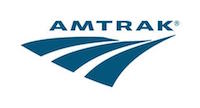
Amtrak engineers and conductors are starting to make their side of the incident known, and they paint a picture of a rushed route opening with crew members feeling anything but prepared to safely transport their passengers from Seattle, Washington to Portland, Oregon.
Several unnamed sources spoke with CNN in a recent report on the crash, and the details are chilling. Critical training was delivered to personnel in a method that almost resembled an afterthought; a detail made even worse by the fact that the locomotives were new models and were unfamiliar to many of the engineers.
Training runs are a critical aspect of opening a new route. While speed limits are certainly among the most important details for a crew to understand, other factors like terrain, landmarks, and other real-world elements must also be taken into consideration when hundreds of lives are at stake. In the case of the training for the Point Defiance Bypass route, that training took place in crowded locomotive cars – sometimes at double the capacity of the engineering space – with some sessions taking place in the dark of night.
In the end, some trainees were doing their entire training runs facing backward and then being expected to safely transport passengers. The engineer at the controls of Amtrak 501 when it crashed told NTSB investigators that he had taken seven to 10 such training runs. Of those seven to 10, he was at the controls for three, and only one had been in the direction the train was moving at the time of derailment.
Had he been given the chance to train more and in better conditions, he might have known to expect the two signs he missed warning him to reduce speed before entering the 30-mile per hour turn at almost 80 miles per hour. When he finally saw the last sign, it was far too late. According to the crash report issued by the NTSB, “as soon as he saw the 30 mph sign at the start of the curve, he applied brakes. Seconds later, the train derailed at it entered the curve.”
Lawsuits continue to be filed as a result of the crash, including one filed by an Amtrak conductor that was on a training run for the route during the crash. Every case so far has called engineer training into question.
